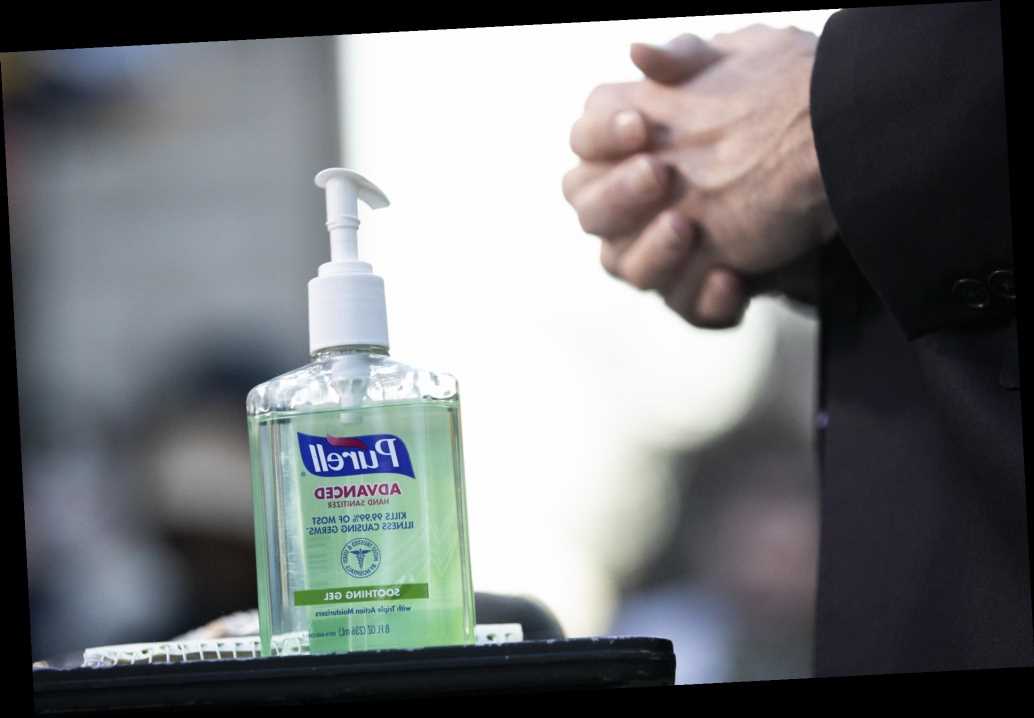As information about the coronavirus pandemic rapidly changes, PEOPLE is committed to providing the most recent data in our coverage. Some of the information in this story may have changed after publication. For the latest on COVID-19, readers are encouraged to use online resources from CDC, WHO, and local public health departments and visit our coronavirus hub.
In an effort to quell the spread of the novel coronavirus (COVID-19), the Transportation Security Administration (TSA) is allowing travelers to carry bottles of hand sanitizer up to 12 ounces in their carry-ons — more than three times the normal limit, 3.4 ounces.
This is the first time in history that the TSA has extended these limits, a spokesperson for the TSA confirmed to PEOPLE, noting that the agency initiated the 3.4 ounce rule in September 2006.
“TSA is allowing passengers to bring liquid hand sanitizer containers up to 12 ounces to be permitted in carry-on bags until further notice,” according to a message on the TSA website, under the heading of Medical Exemptions.
However, carrying a large bottle could result in a longer wait time at security. “Passengers can expect that these containers larger than the standard allowance of 3.4 ounces of liquids permitted through a checkpoint will need to be screened separately, which will add some time to their checkpoint screening experience,” the site says.
The agency makes clear that the new rule only applies to liquid hand sanitizer, and cans of disinfectant spray are not allowed due to their flammable nature.
“Please keep in mind that all other liquids, gels and aerosols brought to a checkpoint continue to be allowed at the limit of 3.4 ounces or 100 milliliters carried in a one quart-size bag,” the website continues.
In addition to these liquid limits, the TSA has made several changes to help keep both employees and travelers safe during the coronavirus pandemic.
Travelers may request that TSA officers change into a new pair of nitrile gloves during the screening process, and TSA officers will be using a fresh swab for each passenger when testing for explosive materials.
Travelers are also being asked not to put small, personal belongings such as wallets, keys and phones in the bins during the TSA security checkpoint, contrary to the regular course of action. Instead, travelers are being asked to keep these items stowed inside their carry-ons.
On March 11, PEOPLE reported that three screeners at a northern California airport had tested positive for the new coronavirus. The TSA officers worked in security screening at Mineta San Jose International Airport.
They were the first in the agency to test positive for the respiratory virus, NPR reported.
The officers are currently being treated, TSA said in a statement, and an additional 40 airport employees were told not to come in.
“The officers are receiving medical care and all TSA employees they have come in contact with over the past 14 days are quarantined at home,” TSA said.
According to the CDC, one of the most effective ways to protect yourself from coronavirus is to wash your hands often, and with the right technique. When your hands are clean, you can prevent germs from spreading from one person to another.
The CDC says that people can use hand sanitizer with at least 60 percent alcohol as an alternative, but it’s not nearly as effective as hand washing. While water and soap can completely remove germs, hand sanitizer mostly just reduces the number of microbes, leaving potential viruses on skin.
As of Monday, there are now at least 3,927 confirmed cases of coronavirus and 68 people have died in the U.S., according to the New York Times. Worldwide, there are now at least 173,800 confirmed cases of coronavirus and 7,281 deaths.
Source: Read Full Article



